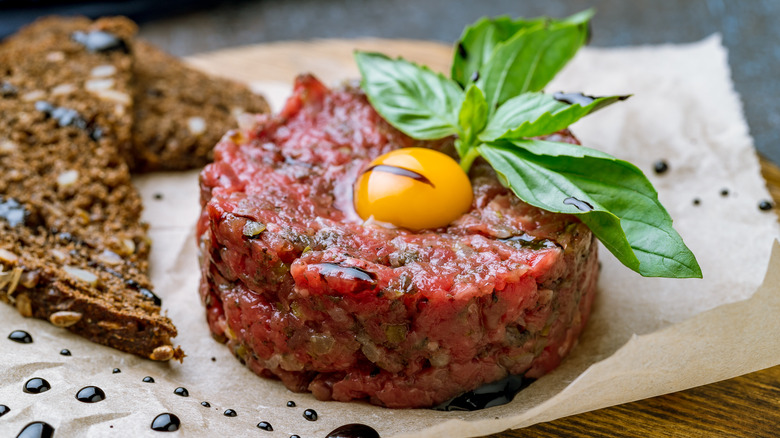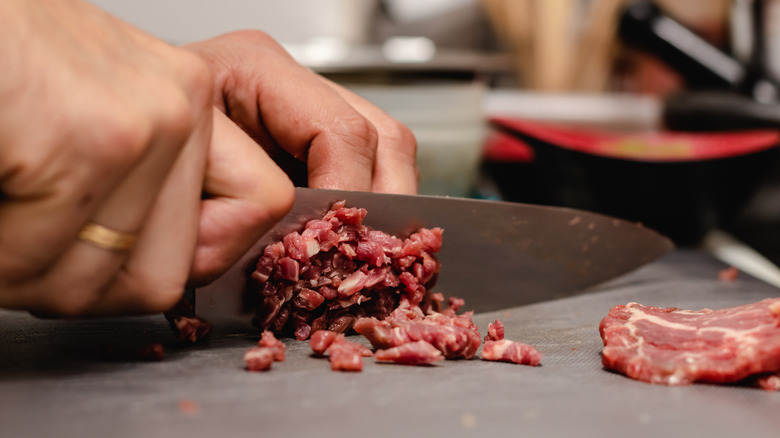The Absolute Best Cuts Of Meat For Steak Tartare
Eating completely raw meat — meat that has never felt the touch of a flame, the searing heat of a pan, or the warmth of an oven — may feel a little dangerous. However, steak tartare and other similar dishes from around the world have been eaten for generations.
In France, steak tartare is a staple on menus and typically made with chopped and seasoned raw beef filet and combined with raw egg yolk, Dijon mustard, capers, and chopped gherkin pickles, according to a recipe published by the BBC.
Wisconsin's version takes on a more ominous name: cannibal sandwich. Considered a Christmas tradition by many Wisconsinites, it's a combination of raw ground beef, spices, and raw onion, served on bread or a cracker (via All Recipes). In Ethiopia, raw beef is considered a delicacy, and is featured in a number of dishes, according to Food & Wine.
Regardless of the recipe, steak tartare is all about the meat. So which cut is the best?
The best cuts of beef for steak tartare
While chefs may disagree on which cut of meat makes the best steak tartare, they all agree on one thing: It's essential to start with the freshest meat from a quality source, such as your local butcher shop.
According to Martha Stewart, beef tenderloin is the best choice for steak tartare. Saveur seconds the choice of beef tenderloin, specifying the center cut. As its name implies, beef tenderloin comes from the loin of the cow, where there is less connective tissue and where the most tender meat is found (via The Spruce Eats). Expensive cuts like filet mignon and chateaubriand come from the tenderloin, according to Epicurious, and are the best suited for steak tartare due to their tenderness and lack of tough, chewy gristle — something you definitely don't want in a tartare.
Another popular cut for steak tartare is top sirloin, something Alton Brown uses in his recipe. Top sirloin is a lean cut that is less expensive than beef tenderloin, but still tender and flavorful enough to stand up to a tartare (via Food & Wine).
Yes, the idea of eating raw steak may be daunting, but don't be afraid to try this culinary classic. And if you plan to make it at home, remember that the first step is to get a high-quality cut from a trusted butcher or meat specialty store. Let your butcher know that you are planning to use the meat for tartare, and they will steer you in the right direction.

